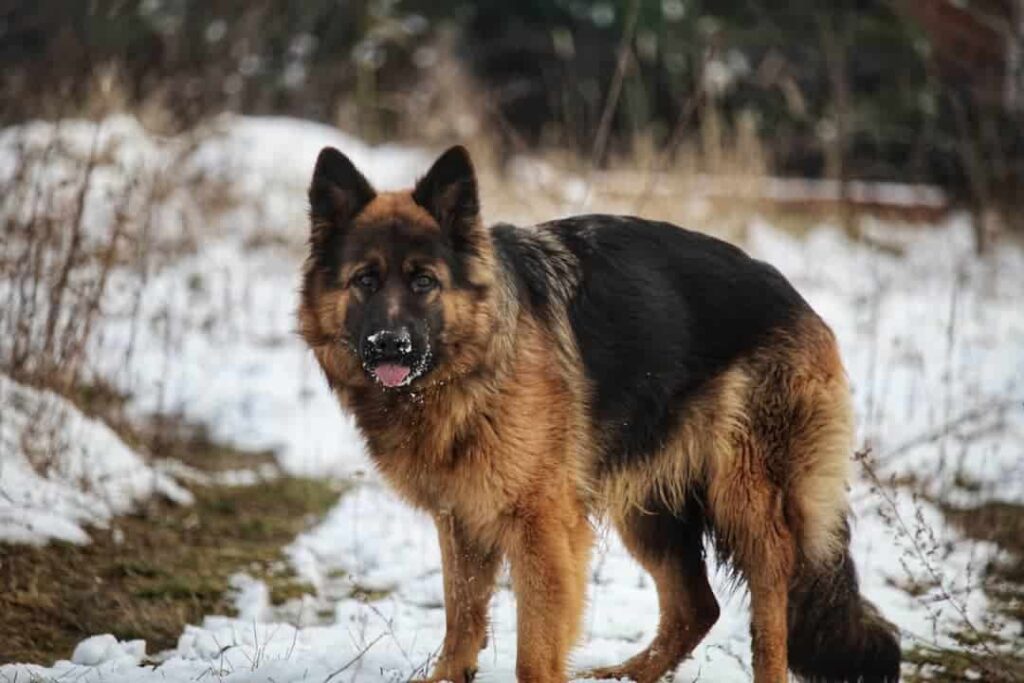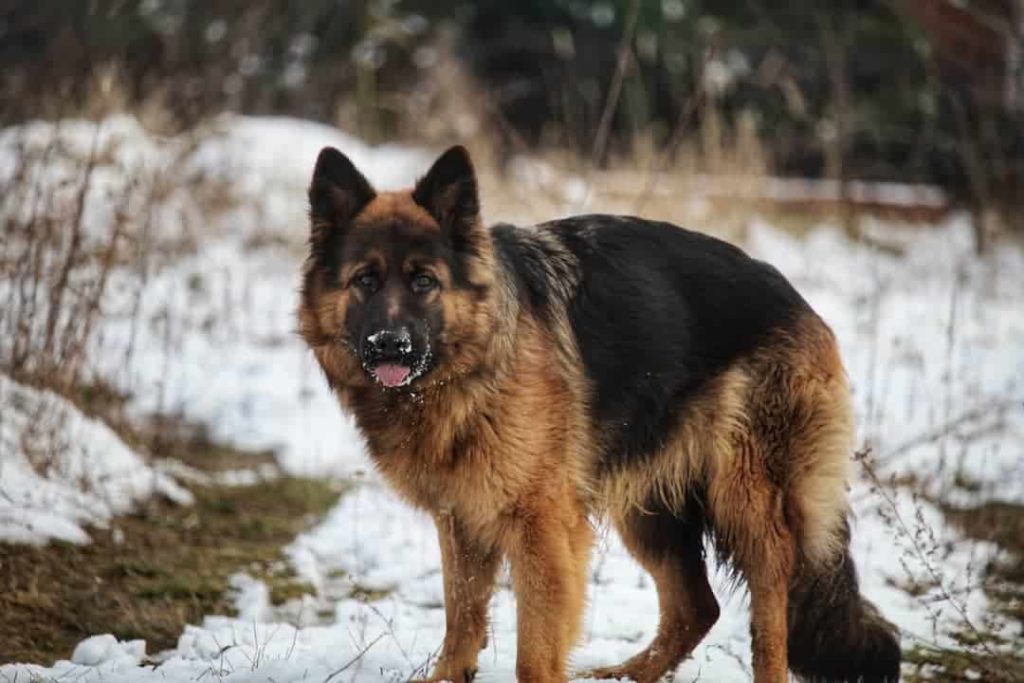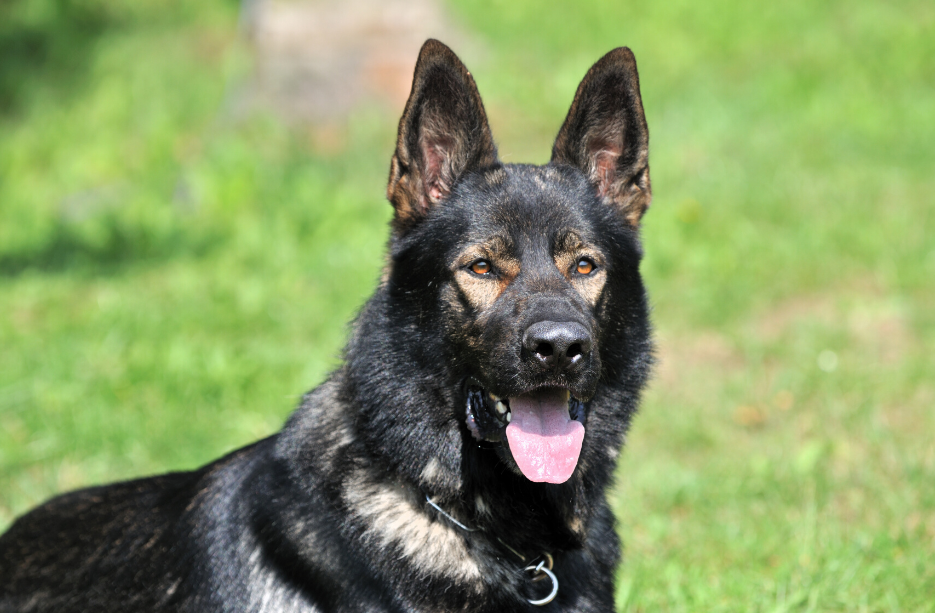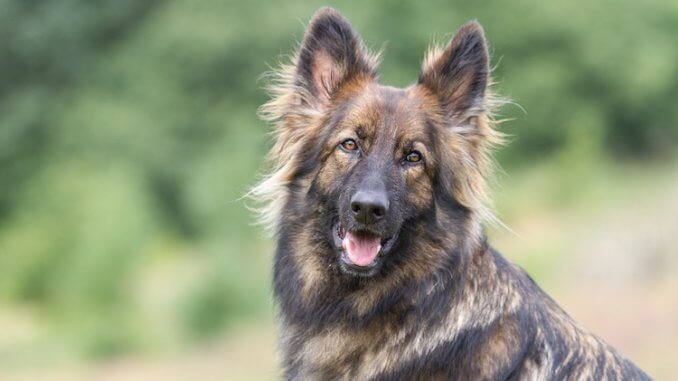Introduction
The Red Sable German Shepherd is a breed that is quite popular, and for good reason. A distinguished and magnificent wolf-like GSD with this particular coat color and pattern will undoubtedly catch your eye. You probably won’t see one any time soon, despite the fact that it is not the most uncommon of the sable color patterns. Because it is so difficult to forecast certain colorations, many breeders choose not to sell them. But occasionally you can find them with a few select breeders. You can learn everything you need to know about the pattern by reading this article!
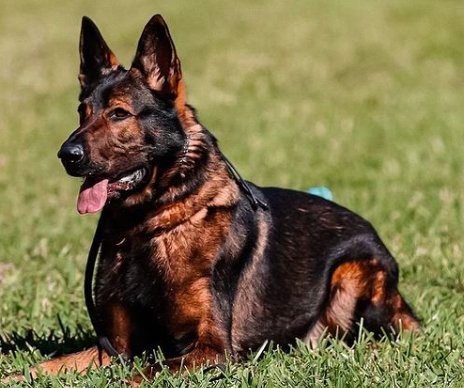
What Is A Red Sable German Shepherd?
A Red Sable German Shepherd is a GSD that has a beautiful, brownish-red coat that is emphasized by black fur tips. Every hair on the dog’s body gradually turns from red to black, giving it an incredible gloss resembling that of wolves.
One of the five primary hues in the design is red. The other four are brown, silver, gray, and black. All of them are gorgeous, but red sticks out and is the most well-liked.Their appearance and attitude are identical, with the exception of the red coloration and pattern. They can have both short and long coats, just like the classic black and brown German Shepherd.
Historical Origin
The Red Sable German Shepherd is a subset of the German Shepherd breed that is distinguished by its distinctive red sable coloring rather than being a different breed in its own right. It’s crucial to look at the history of the German Shepherd breed in order to comprehend the genesis of Red Sable German Shepherds.
In the late 19th and early 20th centuries, Germany was the birthplace of the German Shepherd breed. Breeders who were committed to developing a versatile working and herding dog with intelligence, power, and agility established the groundwork for the breed. The breed was created primarily to herd sheep, but it quickly became known for its outstanding intellect and working prowess.
German Shepherds can have a variety of coat colors and patterns, with the most prevalent.

Physical Characteristics Of Red Sable German Shepherd
The appearance and size of a Red Sable German Shepherd are quite similar to that of the standard German Shepherd breed. However, the key distinguishing feature of a Red Sable German Shepherd is its coat coloration, which sets it apart from the more common black and tan or black and red German Shepherds.
Here are the typical characteristics of a Red Sable German Shepherd:
Coat Colors
The most prominent feature of a Red Sable German Shepherd is its coat color. The coat appears sable, which means it has a mixture of black-tipped and red hairs. The red sable coloration ranges from a light, almost golden-red to a darker, more mahogany-red shade. The black hairs are usually concentrated on the back, tail, and face, creating a striking contrast with the red base color.
Coat Type
Red Sable German Shepherds typically have a double coat with a dense and straight outer coat and a softer undercoat. This coat is designed to provide insulation and protection in various weather conditions.
Size
The size of a Red Sable German Shepherd is consistent with the standard German Shepherd breed. On average, they stand between 22 to 26 inches (56 to 66 cm) tall at the shoulder and weigh between 50 to 90 pounds (23 to 41 kg). Males tend to be larger than females.
Ears
German Shepherds have large, upright ears that stand erect, giving them an alert and attentive appearance.
Tail
They have a bushy, moderately long tail that reaches the hock. Their tail hangs down when at rest and may be raised when they are alert or excited.
Body
The breed has a strong, well-muscled body with a straight back. They have a deep chest and a slightly sloped croup (the area where the back meets the tail).
Eyes
German Shepherds usually have almond-shaped, medium-sized eyes. The color can vary but is typically brown.
Nose
The nose is black in most German Shepherds, but in some red sables, it may be liver-colored or brown.
Muzzle
They have a moderately long and strong muzzle with a black nose or one that matches the coat color in liver or brown-nosed individuals.
Feet
German Shepherds have strong, compact feet with well-arched toes.
Temperament
German Shepherds are known for their intelligence, loyalty, and versatility. They are often used as working dogs in various roles, including as police, search and rescue, and service dogs. They are protective, trainable, and make excellent family pets when properly socialized and trained.
Remember that while the red sable coat color is a distinguishing feature of some German Shepherds, it is just one aspect of the breed’s overall appearance. When choosing a dog, consider their temperament, exercise needs, and suitability for your lifestyle in addition to their physical characteristics.
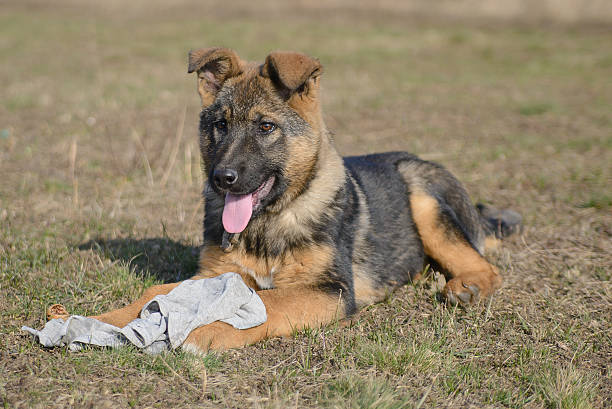
Personality Trait of Red Sable German Shepherd
The personality traits of a Red Sable German Shepherd are generally similar to those of German Shepherds in general. These dogs are known for their intelligence, loyalty, and versatility. Here are some key personality traits commonly associated with Red Sable German Shepherds:
Intelligence
German Shepherds, including Red Sable ones, are highly intelligent dogs. They are quick learners and often excel in obedience training and tasks that require problem-solving.
Loyalty
Red Sable German Shepherds are known for their strong loyalty to their families. They form deep bonds with their owners and are often protective of them.
Alertness
These dogs are naturally alert and make excellent watchdogs. They have a keen sense of their surroundings and can be quick to react to potential threats.
Courage
German Shepherds, including Red Sables, are courageous and brave. They are often used in roles such as police and military work because of their willingness to confront challenges and protect their handlers.
Protectiveness
Red Sable German Shepherds have a protective instinct, which makes them excellent guard dogs. They will usually be cautious around strangers and can be territorial.
Energetic
German Shepherds are an active breed that requires regular exercise and mental stimulation. They have high energy levels and enjoy activities such as playing fetch, running, and agility training.
Socialization
Proper socialization from an early age is crucial for Red Sable German Shepherds. It helps them become well-adjusted and less likely to display excessive aggression or fearfulness around new people or situations.
Affectionate
While they can be protective and alert, Red Sable German Shepherds can also be affectionate with their families. They enjoy spending time with their owners and often form strong emotional bonds.
Work Ethic
German Shepherds have a strong work ethic and thrive when they have a job or task to do. They are happiest when engaged in activities that challenge their minds and bodies.
It’s important to note that while these traits are commonly associated with the breed, individual dogs may vary in their personalities. Additionally, proper training, socialization, and consistent positive reinforcement are essential for bringing out the best in any German Shepherd, including Red Sable ones. If you’re considering bringing a Red Sable German Shepherd into your home, be prepared to invest time and effort into their training and exercise needs to ensure they become well-rounded, well-behaved companions.
Are Red Sable German Shepherds Rare?
Red Sable German Shepherds are not necessarily rare in the sense that they are exceptionally uncommon, but they are less common than the traditional black and tan or black and red color variations within the German Shepherd breed. The rarity of a particular coat color can vary by region and breeding practices.
The Red Sable coloration in German Shepherds is characterized by a reddish or tan base coat with black-tipped hairs, creating a sable pattern. While these dogs are not as prevalent as the more traditional color variations, they are still found within the breed, and you can find breeders who specifically focus on producing Red Sable German Shepherds.
It’s worth noting that coat color should not be the sole consideration when choosing a German Shepherd as a pet or working dog. Temperament, health, and overall suitability for your needs and lifestyle should be the primary factors in your decision. Responsible breeders prioritize the health and well-being of their dogs and aim to produce well-tempered and physically sound puppies, regardless of their coat color. If you have a preference for a Red Sable German Shepherd, you may need to be patient in your search for a reputable breeder or consider adopting from a rescue organization.
Exercise And Training Needs of Red Sable German Shepherd
Red Sable German Shepherds, like all German Shepherds, are an active and intelligent breed that requires regular exercise and training to stay happy and healthy. Here are the exercise and training needs specific to Red Sable German Shepherds:
Exercise Needs
Daily Exercise
Red Sable German Shepherds have high energy levels and need daily exercise to burn off their energy. Aim for at least 1-2 hours of physical activity each day, which can include walks, runs, playtime, and other forms of exercise.
Mental Stimulation
These dogs are highly intelligent and require mental stimulation as well. Engage them in activities like obedience training, puzzle toys, and interactive games to keep their minds sharp.
Playtime
Red Sable German Shepherds enjoy interactive play with their owners. Games of fetch, tug-of-war, and hide-and-seek can provide physical exercise and mental stimulation.
Variety
Keep their exercise routine varied to prevent boredom. Explore different activities such as hiking, agility training, or even swimming if possible.
Socialization
Regular socialization with other dogs and people is crucial. It helps them develop good behavior and reduces the risk of fearfulness or aggression towards unfamiliar situations.
Training Needs
Obedience Training
German Shepherds are highly trainable and excel in obedience training. Early and consistent training is essential to ensure they become well-behaved companions.
Positive Reinforcement
Use positive reinforcement techniques, such as treats and praise, to motivate and reward your Red Sable German Shepherd during training. Harsh or punitive methods can be counterproductive.
Consistency
Be consistent in your commands and expectations. German Shepherds thrive on routine and clear communication.
Socialization
As mentioned earlier, socialization is critical. Expose your Red Sable German Shepherd to various people, animals, environments, and experiences to help them become confident and well-adjusted.
Basic CommandsTeach them basic commands like sit, stay, come, and leash manners. These commands are not only useful for obedience but also for their safety.
- Advanced Training: Consider advanced training if you have specific goals for your dog, such as agility, search and rescue, or therapy work. German Shepherds excel in various canine sports and working roles.
- Behavioral Training: Address any behavioral issues promptly. If you encounter problems like excessive barking, separation anxiety, or aggression, seek guidance from a professional dog trainer or behaviorist.
Remember that Red Sable German Shepherds are a breed that thrives when they have a job to do. Providing them with both physical exercise and mental challenges will help prevent boredom and reduce the likelihood of destructive behavior. Additionally, a well-trained and well-socialized Red Sable German Shepherd can be a loyal, obedient, and well-behaved family companion.
Grooming And Maintenance
The grooming and maintenance needs of a Red Sable German Shepherd are similar to those of German Shepherds with other coat colors. German Shepherds, including Red Sables, have a double coat that requires regular care to keep them healthy and looking their best. Here are some grooming and maintenance tips for Red Sable German Shepherds:
Brushing
German Shepherds have a dense double coat that sheds year-round and more heavily during seasonal changes. Regular brushing is essential to remove loose hair and prevent matting. Brush your Red Sable German Shepherd at least a few times a week, if not daily, using a firm bristle brush or an undercoat rake during heavy shedding periods.
Bathing
German Shepherds do not require frequent bathing unless they get exceptionally dirty. Bathing too often can strip their coat of natural oils, which can lead to skin problems. Use a mild dog shampoo and make sure to rinse thoroughly.
Coat Care
Pay special attention to their coat. The sable pattern of Red Sable German Shepherds can hide dirt and debris more effectively than a solid-colored coat. Regularly check and clean their coat, especially if they spend time outdoors.
Skin Health
Monitor their skin for signs of dryness, irritation, or rashes. If you notice any issues, consult your veterinarian for appropriate treatment.
Regular Check-Ups
Schedule regular veterinary check-ups to ensure your dog’s overall health and well-being.
Feeding And Nutrition
Feeding and nutrition are essential aspects of caring for a Red Sable German Shepherd or any dog. Providing your dog with a well-balanced diet that meets their specific needs is crucial for their overall health and well-being. Here are some guidelines for feeding and nutrition for Red Sable German Shepherds:
Choose High-Quality Dog Food
Select a premium-quality commercial dog food that is appropriate for your dog’s age, size, and activity level. Look for dog foods that list a high-quality protein source (such as chicken, beef, or fish) as the primary ingredient.
Age-Appropriate Food:
Puppies, adult dogs, and seniors have different nutritional requirements. Ensure that you’re feeding your Red Sable German Shepherd a food that is appropriate for their life stage.
Portion Control:
Follow the feeding guidelines provided on the dog food packaging. Adjust the portion size based on your dog’s age, activity level, and individual metabolism to maintain a healthy weight.
Consult Your Veterinarian
Talk to your veterinarian about your dog’s specific dietary needs and any health concerns. They can provide recommendations for the best diet based on your dog’s individual requirements.
Monitor Your Dog’s Weight
Regularly check your dog’s weight and body condition to ensure they maintain a healthy weight. Adjust their diet and exercise routine as needed.
Life Span And Aging of Red Sable German Shepherd
The lifespan and aging of a Red Sable German Shepherd, like all dogs, can vary depending on several factors, including genetics, diet, healthcare, and overall lifestyle. On average, Red Sable German Shepherds have a life expectancy of around 9 to 13 years.
Puppyhood (0-2 Years)
This is the phase of rapid growth and development. Puppies require a lot of attention, socialization, training, and a well-balanced diet to support their growth.
Adulthood (2-7 Years)
During adulthood, your Red Sable German Shepherd will be at their peak physical condition. This is the time when they are most active and energetic. It’s essential to maintain regular exercise and provide a balanced diet to support their overall health.
Middle Age (7-9 Years)
Around 7 to 9 years of age, your dog will transition into middle age. You may start to notice some signs of aging, such as a decrease in energy levels and the beginnings of joint stiffness. Regular veterinary check-ups become even more crucial during this stage to monitor for age-related health issues.
Senior Years (10+ Years):
As your Red Sable German Shepherd enters their senior years, they may experience more pronounced signs of aging, including:
- Reduced energy levels
- Slower movement and increased stiffness
- Possible changes in vision and hearing
- Dental issues
- Increased risk of certain health conditions, such as arthritis, heart disease, and kidney problems
- Changes in appetite and digestion
- Senior dogs may require dietary adjustments, such as transitioning to a senior dog food with lower calories to maintain a healthy weight and joint supplements to support mobility.
Quality of Life
As your dog ages, it’s important to focus on their quality of life. This may involve modifying their exercise routine to low-impact activities, providing comfortable bedding, and ensuring they receive regular veterinary care.
End of Life:
The end of a dog’s life is a challenging and emotional time. Some dogs may reach their senior years with relatively good health, while others may face significant health issues. It’s important to work closely with your veterinarian to make end-of-life decisions that prioritize your dog’s comfort and well-being.
Regular veterinary care and proactive management of age-related health concerns can help improve your Red Sable German Shepherd’s quality of life as they age. Additionally, providing them with a loving and supportive environment is essential throughout their life stages, from puppyhood to their golden years.
How much is a red sable German Shepherd?
The age of the dog, the reputation of the breeder, and the coat color are just a few of the many variables that might affect this pricing. A German shepherd puppy may cost as much as $3500 in some situations. Costs for blue German shepherds range from $1500 to $2000. German Shepherds in black and red can cost between $1800 and $2000.
Read Also
- 7 Body Characteristics of German Shepherd Chow Mix – Behaviour, Caring & Health
- German Sheppit – 9 Spectacular Body Characteristics, Behaviour And Health
- 5 Body Characteristics of Long Haired German Shepherd – The Ultimate Breed Guide & What To Know About The Breed
- Black and White German Shepherd Dog – 5 Basic Body Characteristics, Behavior, Caring And Health
- 4 Ways On How to Train a German Shepherd to Protect You
Summary
A Red Sable German Shepherd is a variation of the German Shepherd breed known for its distinctive coat color. Instead of the traditional black and tan or black and red colors, Red Sable German Shepherds have a reddish or tan base coat with black-tipped hairs, creating a sable pattern.
These dogs share many of the same physical characteristics and personality traits as standard German Shepherds. They are intelligent, loyal, and versatile dogs, often used in roles such as police work, search and rescue, and as service dogs. They have a strong work ethic, require regular exercise and mental stimulation, and benefit from proper training and socialization.
FAQ
What is a red sable German Shepherd?
Red Sable German Shepherds are known as the classic German Shepherd, believed to closely resemble the original Shepherds. This eager-to-work herding dog boasts a beautiful sable double coat, which means that its hair strands contain multiple bands of colors like tan, red, silver, or brown and have black tips.
How much is a red sable German Shepherd?
This price can vary due to multiple factors including the dogs age, breeder reputation, and coat color, just to name a few. In some cases the cost of a German shepherd puppy can be as high as $3500. Blue German Shepherd's can cost around $1500-$2000. Black and red German Shepherd's can cost around $1800-$2000.
Is a sable German Shepherd rare?
Over time, the Sable German shepherd has become rare to spot compared to their classic counterparts, but they are not impossible to find. Overall, the German shepherd dog breed makes for fantastic family and house pets and even better-working animals to this day.

